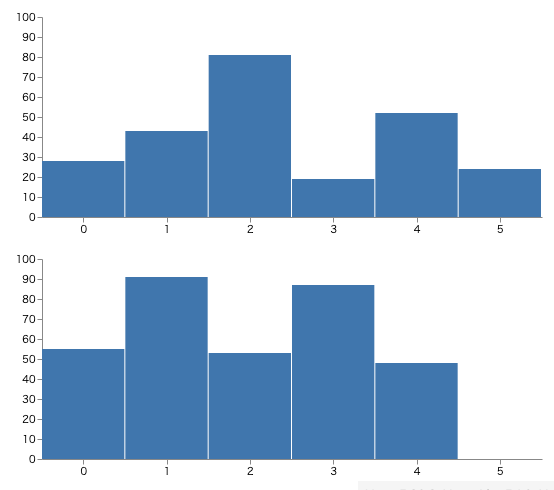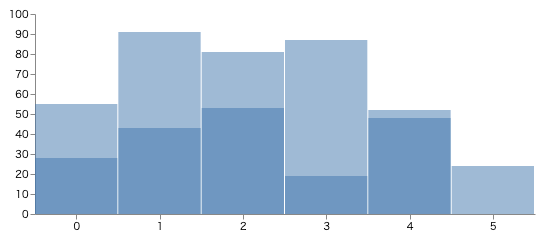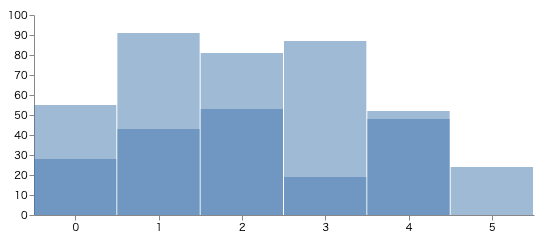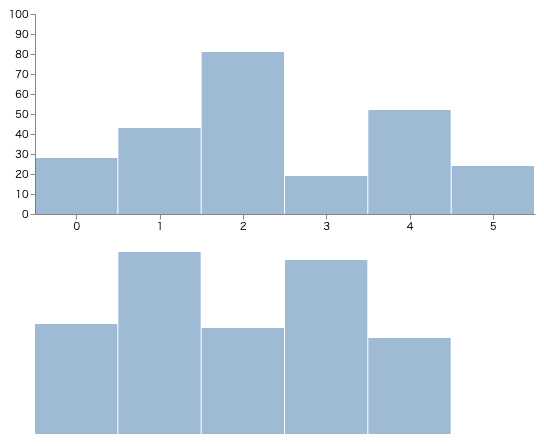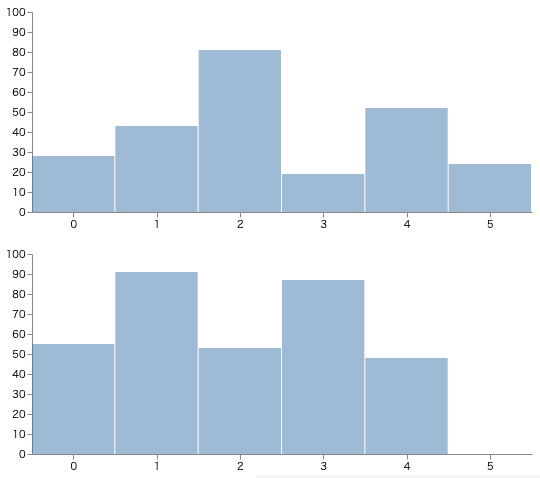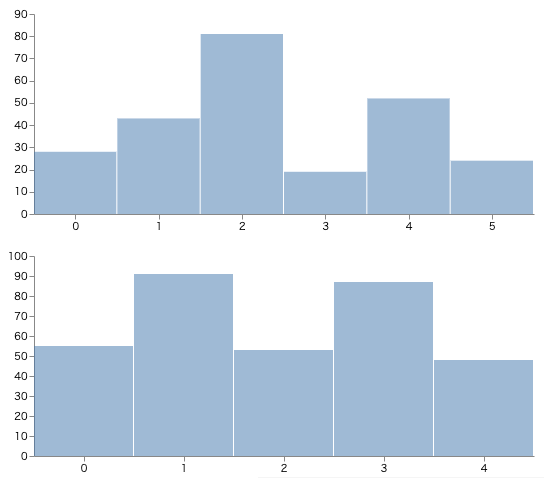今回は、カテゴリが設定されたデータを複数のグラフにして出します。
完成形は以下のような感じに上下に二つのグラフが並びます。
利用データ
x,y,cからなるデータです。最終的にcごとのグラフを作成します。
[
{"x":0,"y":28,"c":0},{"x":0,"y":55,"c":1},
{"x":1,"y":43,"c":0},{"x":1,"y":91,"c":1},
{"x":2,"y":81,"c":0},{"x":2,"y":53,"c":1},
{"x":3,"y":19,"c":0},{"x":3,"y":87,"c":1},
{"x":4,"y":52,"c":0},{"x":4,"y":48,"c":1},
{"x":5,"y":24,"c":0}
]
重ねて表示
一旦、重ねて表示します。通常の棒グラフ表示ですので、ここを参考してください。
グラフ表示部のグルーピング
marksに type="group" を導入します。
table データの c でグルーピングし、table_facet という名前をつけています。入れ子になっている 'marks'が、グルーピングされたデータ群に対して、繰り返し実行されます。
グラフの見た目は変わっていないですが、c=0,c=1で2回、同じ場所に棒グラフ描画をしているイメージです。
"marks": [
{
"type": "group",
"from": {
"facet": {
"name": "table_facet",
"data": "table",
"groupby": ["c"]
}
},
"marks":[
{
"type": "rect",
"from": {
"data": "table_facet"
},
"encode": {
// 先ほどと同じ棒グラフの表示を記載
グラフの分離(Layoutの導入)
レイアウトを設定するために、 layout を導入します。
columns=1 のため、縦一列に並ぶようになります。
"layout": {
"padding": 20,
"columns": 1
},
軸の描画
type="group" に axes の設定を移動し、widthとheight を設定する encode も追加します。
これで、データを分類し複数のグラフで表示することができました。
"marks": [
{
"type": "group",
"from": {
"facet": {
"name": "table_facet",
"data": "table",
"groupby": ["c"]
}
},
"encode": {
"update": {
"width": {"signal": "width"},
"height": {"signal": "height"}
}
},
"axes": [
{
"orient": "bottom",
"scale": "xscale"
},
{
"orient": "left",
"scale": "yscale"
}
],
(おまけ)軸をあわせる必要がない時
axes と同様に type="group" に scales を移動し、参照先のデータを table から table_facet に切り替えると、x軸、y軸のスケールがそれぞれのデータセットに応じた値になります。
"scales": [
{
"name": "xscale",
"type": "band",
"range": "width",
"domain": {
"data": "table_facet",
"field": "x"
}
},
{
"name": "yscale",
"type": "linear",
"range": "height",
"nice": true,
"zero": true,
"domain": {
"data": "table_facet",
"field": "y"
}
}
],
